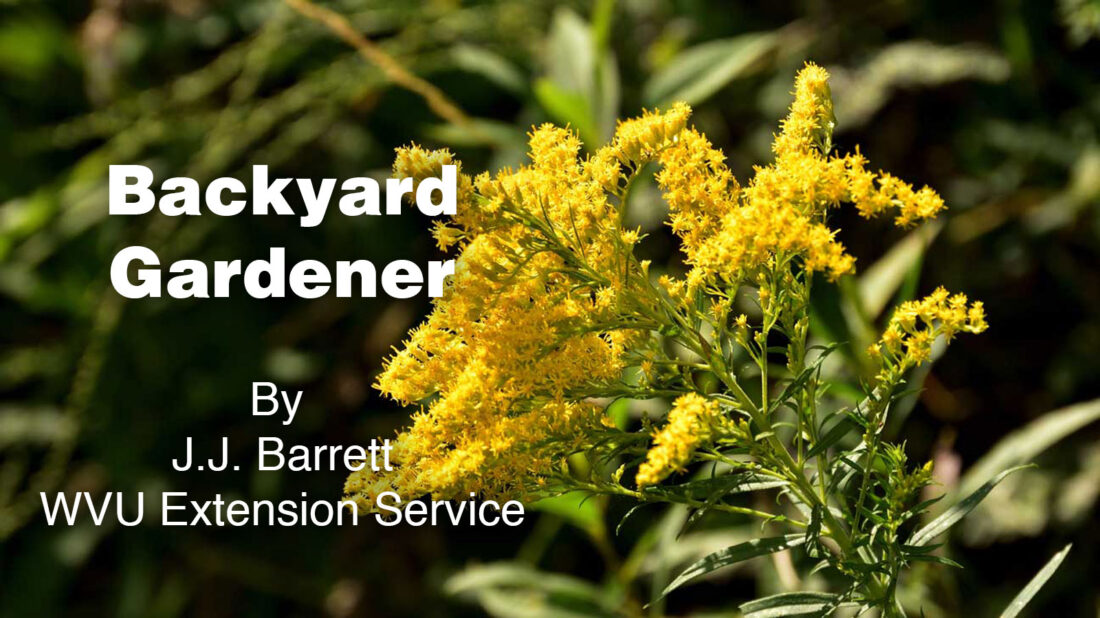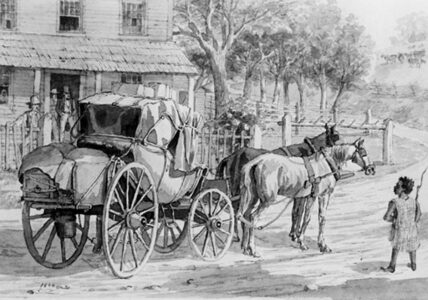Backyard Gardener: Goldenrod – an important native wildflower

(Photo Illustration - Photo Provided - Backyard Gardener)
Editor’s note: This article was originally published on Oct. 4, 2024.
***
Hello Mid-Ohio Valley farmers and gardeners. This week I want to talk about goldenrod, (genus Solidago). Driving through the countryside in autumn, you cannot help but see the tall, flowing yellow flowers of this perennial. Due to it blooming in the fall, goldenrod is an important food source for many insects, including honeybees.
I highly recommend backyard gardeners to add perennials with late-season blooms to the home landscape including helenium (Helenium autumnale var. autumnale), Joe Pye weed (Eutrochium purpureum), New England aster (Symphyotrichum novae-angliae), black-eyed Susan (Rudbeckia hirta) and sedums (Sedum sp.).
While often considered a weed, this showy native North American perennial genus has a lot to offer. Every fall it displays a profusion of hundreds of 1/8- to 1/4-inch-wide individual yellow or “golden” flowers, blooming together to create wand-like clusters on arching branches.
Goldenrod often gets the blame from allergy sufferers, but usually the culprit is ragweed which is wind pollinated and blooms at the same time. Goldenrod pollen is heavy and sticky, requiring insects to move it from flower to flower.
The botanical name for goldenrod, Solidago, means to make whole. This refers to the plant’s healing and medicinal properties. Flowers, leaves and stems have been made into herbal remedies to heal wounds of the skin and treat inflammation of the mouth and throat, tuberculosis, diabetes and arthritis. It has diuretic and anti-inflammatory properties.
Native Americans have used its leaves as a poultice for bee stings and made tea with its flowers and leaves to reduce fever for centuries. During the American War of Independence, goldenrod tea was a substitute for British tea. American colonists turned to home-grown berries and plants to create what were known as “liberty teas” to replace British tea after the Boston Tea Party. Goldenrod, fresh or dried, is still a popular ingredient in herbal teas today.
There are more than 125 species of goldenrods, most of which are native American wildflowers. This makes it easy to find the right plant for your space. Nursery catalogs and garden centers offer a good selection of cultivars. Goldenrod can spread aggressively, but some ornamental varieties don’t spread as quickly.
There is also a wide range of sizes, as some grow over 6 feet, like tall goldenrod, and some only around 2 feet, like blue-stemmed goldenrod (Solidago caesia). Many are well adapted to the Mid-Ohio Valley.
Goldenrod could be a great addition to your home landscape and garden as an ornamental and pollinator. Several goldenrod species and hybrids are outstanding perennial garden plants. They also make excellent fresh and dried cut flowers. New cultivars and hybrids offer neat, compact growth, as well as a variety of flower forms.
Goldenrods are easy to grow when planted in good garden soil in full sun. They are extremely hardy, drought-tolerant, long-lived perennials. They also have few insect or disease problems and require minimal maintenance.
The hybrid forms will need division every four to five years. Division is best done in early spring just as growth commences, but most goldenrods are also easily propagated by tip cuttings taken in spring or by basal cuttings taken in fall.
Here are a few recommended cultivars for the home landscape. “Baby Gold” and “Cloth of Gold” are shorter varieties less than 2 feet tall, producing large flowerheads with bright yellow flowers blooming in August and September. “Golden Fleece” can be used as a ground cover, reaching 15 inches tall and forming a dense mat of yellow foliage.
“Crown of Rays” grows 2 to 3 feet tall with strong upright stems forming a columnar habit. Their large, flat, bright yellow flower heads bloom from mid to late summer. “Goldenmosa” is a taller cultivar reaching 3 feet in height with yellow green foliage and yellow flowers. It blooms in August.
“Fireworks” is an interesting and popular variety for the home landscape. It was introduced in 1993 from the North Carolina Botanical Garden, originally having been selected from a coastal plain population of the species. In full flower, these plants resemble yellow sparks streaming outward from exploding fireworks.
It was the top-rated cultivar in the five-year goldenrod trials at the Chicago Botanic Garden that included 22 species and cultivars. It reaches 3 feet tall and displays branched panicles covered with bright yellow flowers every fall.
While goldenrod supports a wide variety of insects that forage on it while blooming, it also supports a variety of other animals throughout the year. Golf-ball-shaped swellings called galls are commonly found on goldenrod stems.
Goldenrod is host to around 50 species of insects – including flies, moths and midges – that cause this overgrowth of plant tissue. One common insect is the goldenrod gall fly (Eurosta solidagnis), a tephritid fly smaller than the housefly with translucent wings mottled with brown splotches.
You will not regret adding this important native perennial flower to your backyard. Goldenrod is one of the best pollinator-attracting plants for the fall season and will add beauty to your landscape for years to come. Contact me with questions at the WVU Extension Office at (304)-424-1960 or at jj.barrett@mail.wvu.edu. Good luck, and until next time, Happy Gardening!






